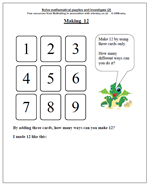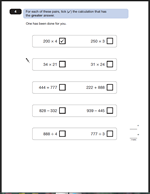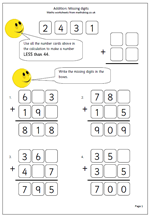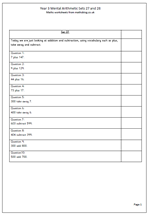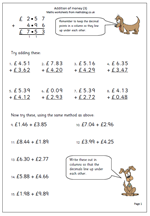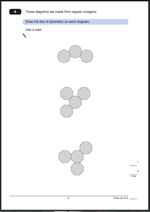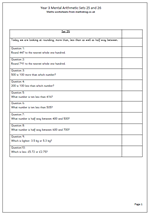Open ended questions are an excellent way to reinforce mathematical concepts, practice number skills and find out about some of the amazing patterns in maths. This maths worksheet is posted in our Year 2 category, under Using and Applying Maths and has proved to be one of our most popular resources.
The problem is to find as many ways as possible to make a total of 12 using three of the numbers on the cards. (Cards cannot be used twice in the same total so 4, 4 and 4 would not be allowed.)
It would be a good idea to have some cards printed with the digits on so that they can be cut out to help with this. They are available in the reception maths worksheets section.
Plenty of practice here at adding three small numbers. Also encourage working in a logical order and setting out results in a clear, logical way. There is no reason why recordings cannot be made of totals that are not 12.
Again plenty of opportunity for talking about the numbers and what counts as a different way. Is 1 + 2 + 9 the same as 2 + 1 + 9 ?
